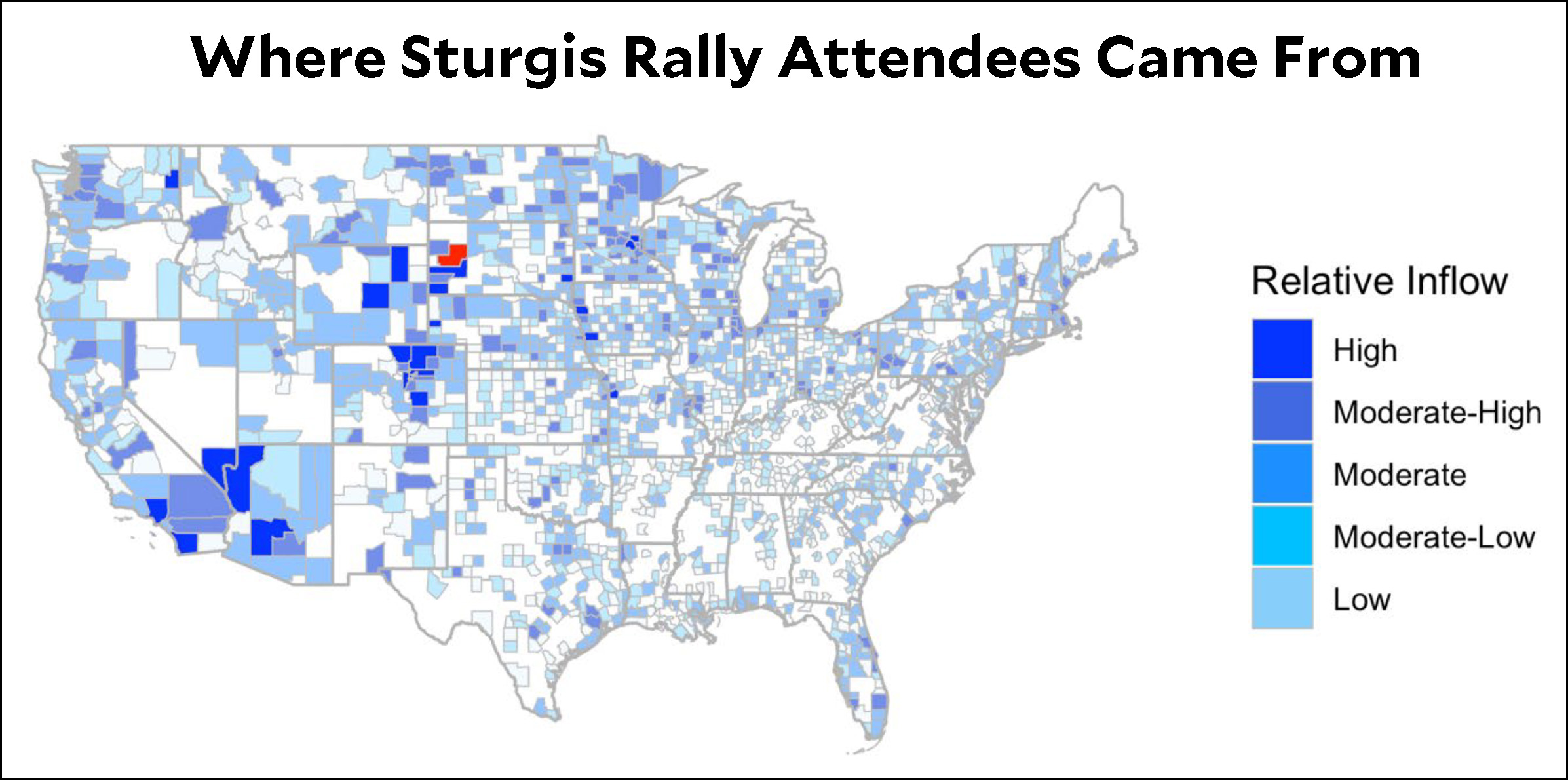NOTE: It seems very likely that this study is just wrong. Jennifer Beam Dowd has a good explanation of its defects here. I’m leaving the original post in place for anyone who wants to understand how the study was done, but you shouldn’t take the results seriously.
During the month between August 2nd and September 2nd the US recorded 1.4 million new cases of COVID-19. According to a new study, 19 percent of those cases were caused by the Sturgis Motorcycle Rally in South Dakota.
That is not a typo: 19 percent. And God only knows how many more to add to that as infections spread not from attendees, but from the next generation of people infected by the attendees. It’s probably impossible to ever know.
The study’s methodology was relatively straightforward: the authors used anonymized cell phone data to determine where attendees came from and where they returned to. Then they measured increases in COVID-19 in those places. After plotting every county in the US, they found a strong dose-response relationship between increases in COVID-19 and the number of attendees from each county. After a bit of arithmetic, they estimated that Sturgis was responsible for a total of 266,000 new cases in the one-month study period.

The authors also estimate a total public health cost of about $12 billion as a result of these additional infections, which may or may not be entirely accurate. To me, though, that’s hardly a dramatic figure when the total cost of the pandemic appears to be in the range of trillions of dollars. What’s more important is the knowledge that these kinds of superspreader events are what keep the pandemic going and prevent us from ever getting back to normal. Other similar kinds of events might be far smaller than Sturgis, but there are a lot more of them. Shut ’em down!


















